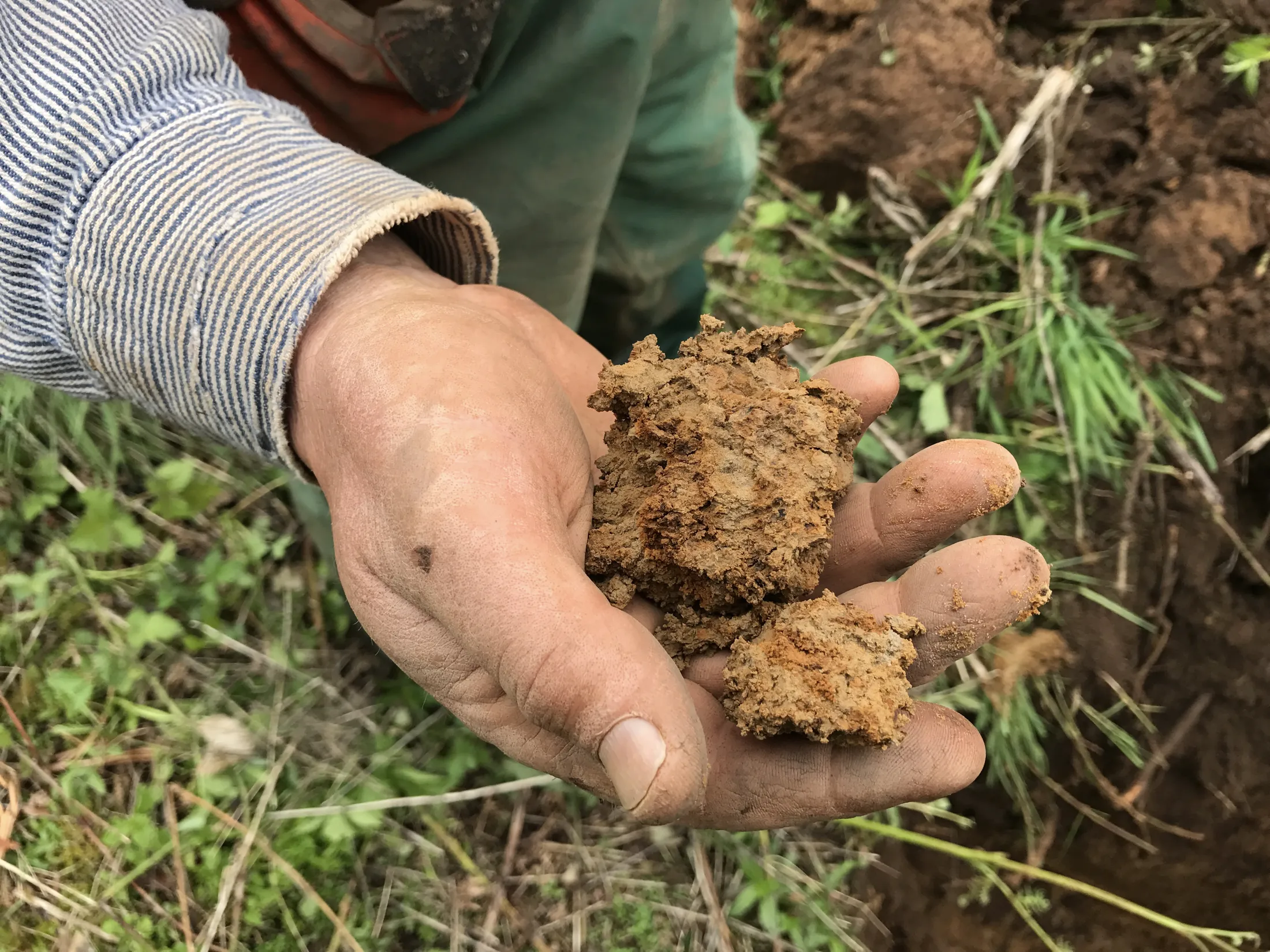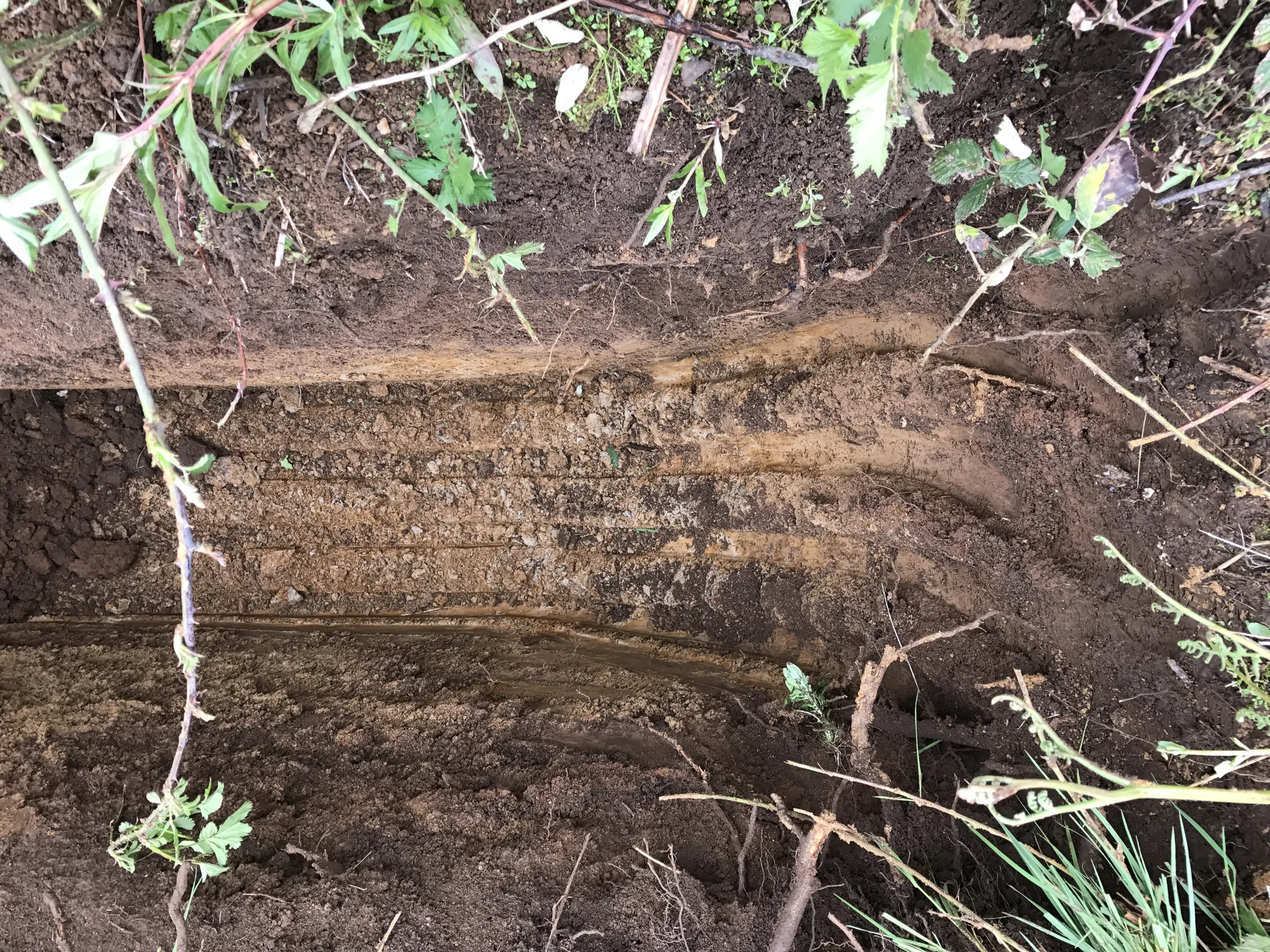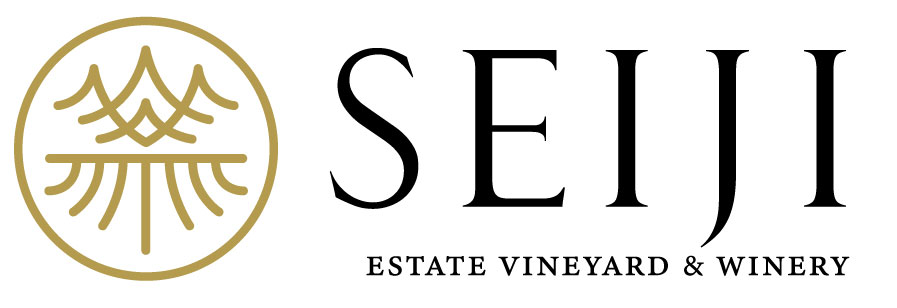Est. 2018
Seiji Estate Vineyard
Grounded in the Laurelwood appellation, Seiji Estate specializes in small lots of Chardonnay and Pinot Noir inspired by its surroundings.
Wines from the Laurelwood AVA tend to spotlight right red fruit notes and a pronounced earthiness. Seiji Estate wines put the appellation on a pedestal, championing acidity and offering incredible freshness. Clonal variation adds another depth to the wines from the estate, allowing them to show well young as well as age gracefully. Like the farming philosophy, the winemaking approach is low input, designed to coax the natural flavors out of the place.
TECHNICAL | PROPRIETOR | HISTORY | VINEYARD | SOIL | DEVELOPMENT | FARMING | MANAGER | GRAPE SALES

Technical
The vineyard began in 2018, planted to five acres of Chardonnay and 15 acres of Pinot Noir. Modeled after the Grand Cru sites of Burgundy, the east-facing rows enjoy soft morning sunlight and a favorable slope. A mix of resident soils — both Laurelwood and the volcanic Nekia — nourish the vines and impart character in the fruit. Farmed organically, the vineyard reaches an altitude of 860 feet and enjoys refreshing breezes and cool evening temperatures; prized traits in viticulture.
01
Planted Acres
20
02
Varietals Planted
Pinot Noir and Chardonnay
03
Soil Type
Laurelwood and Nekia
04
Lat/Long
45.347787, -122.905716
The Proprietor
Seiji "C.J." Yano
Proprietor Seiji "C.J." Yano has enjoyed a long career in business. But wine has always been his passion. He had always dreamed of growing his own grapes and making his own wine. If he was able to leave something real and tangible behind for future generations, he hoped it would be high quality wine and a place of beauty for people to come and appreciate it in. When he walked into this very special property in the Willamette Valley he fell in love. The 36 acres of land in Chehalem, Washington County, is all rolling hills, forest, birds, a pond with beavers, a spring, and gently flowing creek. Only 30~40 minute drive from downtown Portland, and 20 minutes from Beaverton and the Tigard area, the property had been owned by a single family for over 100 years.






History of the Land
The beauty of the vistas here evoke visions of the first migrants, farmers, and settlers who almost 200 years ago braved rigors of the Oregon Trail to reach this fertile valley. People who traveled in search of farmland and new opportunities in the Pacific Northwest. The journey required incredible endurance, determination, and resilience. Qualities that have become an enduring part of American history and folklore. The Oregon Trail and the covered wagons symbolize the pioneering spirit of the American Westward Expansion. And this is the very place that they set out in covered wagons to reach and risked their lives to get to. The previous owner of the land left four wooden wagon wheels to Seiji Estate as a reminder to channel that same pioneer spirit in order to make the very best quality Willamette Valley wine.
The Vineyard
Seiji Estate is a small vineyard, allowing the growers of the grapes and the winemakers to concentrate on the details that make fine wine. The land is similar to Bourgogne grand cru vineyards. The slope of the land faces east, allowing the grapes to soak up morning sun and to continue soaking it up all day. A nice breeze flows in from the western hilltops, making the vineyard less moist and allowing for good drainage. The natural gifts of the land allow us to do organic firming. Because it’s the first time grapes have been planted here, Seiji Estate can allow land which has been sleeping for many years to shine.
Seiji Estate vineyards are located from a high of 860 feet to a low point of 730 feet in altitude which brings us good acidity. We also try not to use fertilizers to avoid losing exactly the right amount of acidity in the grapes, sacrificing higher volume. Our farming methods are made to complement the gifts of our terroir in order to produce the highest quality wine.
On a clear day the view from our planned tasting room includes Mt. Hood, Mt. St Helens, Mt. Adams, and Mt. Rainer. Humbling, magnificent, and peaceful, and different in every season of the year. We hope to share with visitors the joy of this special place when they come to taste our wines.
GEOLOGY
The Soil
The typical soil profile of our vineyard is Laurelwood which is comprised of a silty loam deposited during the Missoula floods at the end of the last ice age between 15,000 and 13,000 years ago. The silt was left by the retreat of ice age glaciers that was blown onto the valley's hillsides between 1 million and 50,000 years ago. The soil drains well with a water retention of 7.5 to 12 inches. Laurelwood is soil composed mostly of sand (particle size > 63 µm), silt (particle size > 2 µm), and a smaller amount of clay (particle size < 2 µm) in the ratio of about 40%-40%-20% concentration of sand-silt-clay, respectively. The pinot noirs that come from this soil tend to have brighter red fruit, with an earthiness to them, and sometimes a little bit of white pepper on the finish. The Chardonnays that come from this soil are dominated by intense aromas of white-fleshed fruit with floral creamy oaky notes on the nose, and ample, smooth and powerful feel in the mouth.











Development & Clones
Two-thirds of the land was planted with flowering plants (vetch) to improve soil health and structure. Trees were cut down on the remaining one-third of the land, and the stumps were removed to create open space. The machinery used to clear the remaining vegetation was also used to level the land, creating an even surface ideal for planting vines, and grading the land to ensure proper drainage. The land was contoured to enhance water runoff and reduced the risk of erosion. After clearing, the soil was deep ripped to break up any compacted layers, which allowed for better root penetration. Tilling followed to further prepare the soil, mixing organic matter and other soil amendments as needed. Once the soil was prepared, trellis systems were installed to support the vines as they grow. Vines were planted in the cleared and prepared soil, following the vineyard design layout. Early maintenance included protecting young vines from pests, managing weeds, and ensuring that the soil remains in optimal condition.

The vineyard began in 2018, planted to five acres of Chardonnay and 15 acres of Pinot Noir. We have planted several different Pinot Noir clones and a few different Chardonnay clones, which allows us to make complex clone blending. Different clones can bring unique flavor profiles to the wine. For example, one clone might contribute more fruity notes, while another adds spiciness or floral aromas. Blending these together can result in a wine with greater complexity and more layers of flavor. Some clones might be more acidic, while others might have higher sugar content. By blending different clones, we can achieve a better balance between sweetness, acidity, tannins, and alcohol, creating a more harmonious wine. Some clones contribute more tannins, which are essential for the wine’s structure and aging potential. Blending clones with varying tannin levels can create a wine that is enjoyable in its youth but also has the potential to age gracefully.
Farming Method
We have two defined management programs available in advanced farming method today. The sustainable management program conforms to the Low Input Viticulture & Enology (LIVE) certified practices and guidelines and also an organic management program which has been created using several resources over many years. We adopt an organic management which reduces chemical runoff, improves soil health and promotes biodiversity at our vineyard. We believe that healthier soils and vines can produce grapes with more complex flavors.
Viticulture
Our Vineyard Manager
Our vineyard manager, Angel Martinez, developed our vineyard from scratch and combines technical expertise in viticulture with strong leadership, organizational, and problem-solving skills. His passion for the craft, financial acumen, and a commitment to continuous learning further enhance his effectiveness will helps ensure our vineyard’s success and the production of high-quality grapes.
Born in the small town of Corral Nuevo, Veracruz, Mexico, Angel Martinez was introduced to agriculture early in life, working with his family to grow sugar cane, beans, and corn. In the fall of 1995, he moved to Oregon and began his journey in viticulture with a harvest at Domaine Drouhin Oregon alongside Buddy Beck. Following three successful harvests at Domaine Drouhin Oregon, Angel went to work for Buddy at Advanced Vineyard Systems, Inc. (AVS).
In 1999, Angel took on the role of foreman at AVS and by 2003, he had advanced to Vineyard Site Manager. His dedication and expertise led to his promotion to General Manager of Operations in 2007. In 2016, Angel bought AVS, marking a significant milestone in his career.
Angel’s vast knowledge of viticulture stems from his mentorship under Buddy Beck, as well as his academic pursuits at Chemeketa Community College. However, his most profound learning has come from nearly three decades of hands-on experience in designing, developing, and managing vineyards in the North Willamette Valley.
For Angel, agriculture is more than a profession—it’s a passion. He especially loves working in vineyards, where each season brings new challenges and opportunities to cultivate the finest fruit to produce exceptional wines.
Outside of work, Angel enjoys spending time in nature and engaging in outdoor activities. His hobbies include farming, fishing, camping, and cherishing moments with his wife, Nicole, and their daughters, Maria, Rosa, and Liliana.

